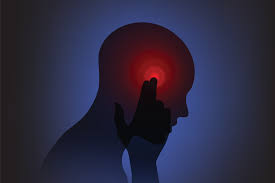No products in the cart.
Cultural Perspectives on Pain and Healing: Exploring Diverse Approaches to Well-being
Introduction:
Pain and healing are universal human experiences, yet the ways in which they are perceived, understood, and addressed vary significantly across different cultures. Cultural perspectives shape not only how individuals experience pain but also how they seek relief and healing. In this article, we delve into the rich tapestry of cultural beliefs, practices, and traditions surrounding pain and healing, highlighting the diversity of approaches that exist around the world.
Cultural Perceptions of Pain:
Pain is not just a physical sensation; it is also deeply influenced by cultural, social, and psychological factors. In many Western societies, pain is often viewed through a biomedical lens, focusing on the physiological mechanisms that underlie it. However, in cultures where holistic approaches to health prevail, pain is often seen as interconnected with emotional, spiritual, and social dimensions.
For example, in traditional Chinese medicine pain is believed to result from an imbalance of Qi, or life force, within the body. Acupuncture, herbal remedies, and practices such as Tai Chi and Qigong are used to restore harmony and alleviate pain. Similarly, in Ayurveda, the ancient healing system of India, pain is thought to stem from imbalances in the body’s doshas, or energy forces. Treatment may involve herbal medicines, dietary adjustments, and lifestyle changes aimed at rebalancing these energies.
In many Indigenous cultures, pain is understood within the context of community and spirituality. For example, among the Navajo people of North America, illness and pain are often seen as a result of disharmony with the natural world or spiritual imbalance. Healing ceremonies, rituals, and the guidance of traditional healers are integral to restoring balance and well-being.
Cultural Approaches to Healing:
Healing practices vary widely across cultures, reflecting diverse belief systems, traditions, and values. While biomedicine plays a central role in many Western healthcare systems, traditional healing methods continue to thrive alongside or in conjunction with modern medical treatments in other parts of the world.
In addition to TCM and Ayurveda, traditional healing practices include various forms of energy medicine, such as Reiki and Pranic healing, which focus on manipulating the body’s energy fields to promote healing. Indigenous healing traditions often involve ceremonies, storytelling, and the use of sacred plants to facilitate healing on physical, emotional, and spiritual levels.
In some cultures, the arts are also seen as powerful tools for healing. Music, dance, and visual arts are used to express emotions, connect with others, and promote healing and well-being. Art therapy, for example, is increasingly recognized as a valuable therapeutic modality in Western healthcare settings, but it has deep roots in many Indigenous and traditional cultures as well.
Challenges and Opportunities:
While cultural perspectives on pain and healing offer valuable insights and alternative approaches to well-being, they also present challenges in the context of modern healthcare systems. Western biomedical models often struggle to accommodate diverse cultural beliefs and practices, leading to disparities in access to care and quality of treatment for individuals from minority or marginalized communities.
Furthermore, cultural differences in the expression and interpretation of pain can complicate diagnosis and treatment. For example, some cultures may have different ways of communicating pain or may prioritize stoicism and endurance over seeking help. Healthcare providers must be culturally competent and sensitive to these differences to ensure effective communication and care.
At the same time, there is growing recognition of the importance of integrating cultural perspectives into healthcare delivery. Culturally competent care not only improves patient outcomes but also fosters trust, respect, and collaboration between providers and patients from diverse backgrounds. Initiatives to promote cultural competency training among healthcare professionals and to increase diversity in the healthcare workforce are essential steps toward addressing these challenges.
Conclusion:
Cultural perspectives on pain and healing offer a rich tapestry of beliefs, practices, and traditions that reflect the diversity of human experience. From traditional healing systems rooted in ancient wisdom to contemporary approaches that integrate the arts and spirituality, there is much to learn and appreciate about the ways in which different cultures understand and address pain and suffering.
By embracing cultural diversity and promoting cultural competency in healthcare, we can create more inclusive and effective systems of care that honor the unique needs and perspectives of all individuals. Ultimately, the journey toward healing is as diverse and multifaceted as the human experience itself, and by recognizing and respecting cultural differences, we can enrich our understanding of pain and healing for the benefit of all.


 WhatsApp Us 24/7
WhatsApp Us 24/7